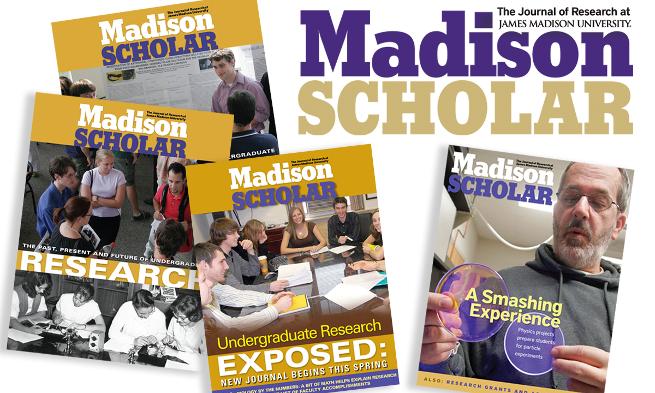Paper's Authors Include JMU Students Who Did Research as Freshmen
News
By Austin Farinholt ('11), JMU Public Affairs
While many students spend their first few semesters as undergraduates building a foundation for writing that big research paper, freshmen enrolled in the Viral Discovery Course at James Madison University are one step ahead. Many of them are now co-authors on a scholarly article published in the January edition of the Public Library of Science journal, PLoS One.
Dr. Louise Temple, a professor of integrated science and technology and one of three faculty members teaching the course, said, "I have a collection of e-mails from students who authored the papers and they say, 'Wow, is this real? Can I really be an author?'" Not only are they authors, but at least half of the students who take the course want to continue with research through college and many of them are much more successful in getting internships than students who take the usual route, Temple said.
"The students enter the course expecting us to fill them up with knowledge, but what we actually try to teach them is how to be a scientist," said Dr. Steve Cresawn, an assistant professor of biology who also teaches the course. Having their work published provides numerous benefits, Cresawn said, including "helping make these students more competitive for whatever they decide to do after college, whether they pursue graduate school, a professional school or enter the work force."
Students enrolled in the course have already found it to be influential in their academic and life choices. "It gave me the opportunity to learn basic research skills and to discover something no one else discovered before," said junior Jonathan Barrett. "I would not currently be doing research if not for the Viral Discovery Course."
Tatjana Lyons took the course and advises other first-year students to consider taking it. While she switched from studying biology to studying health sciences, Lyons says, "You don’t have to be a biology or biotech major to enjoy this research class. I believe it is an important aspect of learning and can be a fun way to learn how research works."
The two-semester class, which consists of 15 to 16 students per section, spends the fall semester finding viruses and then comes back in January to finish phage sequencing and to analyze the results for the second semester. While students typically categorize their findings into existing clusters, the JMU students discovered a brand new phage that did not fit into a cluster. It is a large phage that is so unique the students felt it should be named after someone who shares these characteristics. They decided to call it LeBron after the professional basketball star, LeBron James.
A phage is a virus that infects bacteria. Phages can be found almost anywhere, including in soil, which is precisely where the students found LeBron. Phages can be used as antibiotics, although they are not typically utilized that way in America, Temple said. They also can be used to spray produce to cut down on food poisoning. Besides having practical applications, phages have been instrumental in understanding genetics because of their unique ability to take their DNA and other DNA from one cell to another. Also, says Temple, they are interesting just because they are "cute."
The research article, Expanding the Diversity of Mycobacteriophages: Insights into Genome Architecture and Evolution was published January 27 and was authored by 192 students, 14 of them from JMU. The Viral Discovery Course was offered at 12 schools when it was started by the Howard Hughes Medical Institute three years ago and is expanding. HHMI hopes it will be offered at more than 60 schools next year. Temple said she hopes that in the future there will be even more student involvement in writing the research paper than there was in the initial paper. She said students who get their names on a paper feel they contributed in a way most students do not get to experience.
